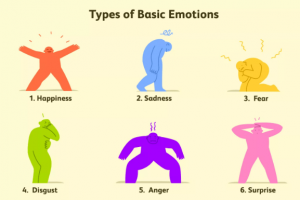From humble beginnings, e-commerce firms have taken the consumer market by storm over the course of the last decade.
This is reflected by the sheer growth of Internet sales, which now account for an estimated 15.5% of consumer expenditure as a whole (up from just 3% at the end of 2006). The growth of companies such as ASOS and Just Eat also embodies the evolution that has taken place within the e-commerce marketplace, with experts predicting that online sales could represent a third of all consumer expenditure within the next decade.
How can your Business capitalize during the year of e-commerce?
In many ways, 2016 is set to be the year of e-commerce. There are numerous trends and data-sets to support this assertion, so let’s take a look at three crucial statistics, their meaning and how your business can capitalize in the year ahead.
E-commerce is a $ 220 billion market in the U.S, but Western Europe is gaining ground
In terms of global trends, the U.S continues to lead the way as an e-commerce giant. This $ 220 billion market has grown at an annual rate of 17% during the last decade, making American consumers a primary target audience for brands around the world.
E-commerce sales in Western Europe are quickly gaining ground, however, while they are also likely to outstrip the U.S in terms of growth over the course of the next five years. With sales projected to rise to $ 191 billion by the end of 2017, nations such as the UK, Germany and France will help to drive a compound annual growth rate of 11%. This will see Western Europe close the gap on the U.S and emerge as a similarly competitive marketplace.
If you e-commerce venture is looking to drive international sales, it is important to target these two markets as a key part of your overall strategy. You will need to pay particular attention to the market in Western Europe, however, which has a segregated consumer market and is far more culturally diverse than the U.S.
To achieve success, be sure to research consumer trends and behavior in targeted regions throughout Western Europe, before tailoring your marketing and sales drives accordingly. It may be worth starting small when you first target the European market, focusing on specific communities and nations before scaling your operation and reaching out to new audiences.
60% of International traffic for e-commerce comes through Facebook
While e-commerce offers you access to a global pool of customers, you will need a strategic sales and marketing plan to successfully convert international consumers. Depending on the nature of your product, however, the international market may also provide your best route to volume sales and a healthy turnover.
This is why international sales and website traffic drives e-commerce on a global scale, with social media playing an increasingly influential role in marketing products and converting sales. An estimated 60% of international, e-commerce traffic comes through Facebook, for example, with online customers increasingly likely to research specific products and reviews through this platform before clicking through to the associated website.
With this in mind, there is a pressing need to develop a multi-channel social media presence that is integrated seamlessly with your website. This creates a fluid link between your primary sales platform and individual social outlets such as Facebook, optimising individual landing page impressions and conversion rates as a result.
One of the best ways to achieve this is to include visible, social media icons across strategically selected landing pages (particularly your home pages and those that feature product listings). While this may sound obvious it is important to note that placement is crucial, with best practice suggesting that icons should be included at the top or along the bottom of your page and remain visible at all times during user navigation.
Mobile will account for 26% of retail e-commerce sales in the U.S by the end of 2017
If we accept that that e-commerce market in the U.S remains a trail-blazer for the rest of the world, this statistic underlines the global importance of the mobile channel during the next decade. Mobile transactions (conducted through smartphones and tablets) will account for 26% of all retail e-commerce sales in the U.S by the end of 2017, for example, while the corresponding figure in the UK stands at an impressive 35%.
Tablet commerce is rising at a particularly exponential rate, and whichever way you look at it there is no doubt that mobile is becoming increasingly influential in the e-commerce market. Your only response as a business-owner is to ensure that your website and landing pages are mobile-friendly, as you focus on simplifying the customer experience and optimizing sales conversion rates.
Many business-owners will have already been given a nudge by Google’s mobile-friendly algorithm update, which was unrolled globally in April 2015. This sought to improve the mobile ranking of websites and pages that were compatible with smartphones and tablets, rewarding resources that were readable without tapping or zooming and spaced appropriately. These measures are also beneficial to e-commerce, as they make it easier for customers to identify products and complete sales transactions.
There are other crucial steps to follow too, as you should aim to achieve loading times of less than one second for landing pages and product-specific content. This will help to drive a higher volume of sales, as will the decision to integrate a wider range of payment options online. If customers can check-out using e-wallet solutions such as PayPal alongside traditional card payment options, you will automatically benefit from higher conversion rates.
Digital & Social Articles on Business 2 Community(16)
Report Post





